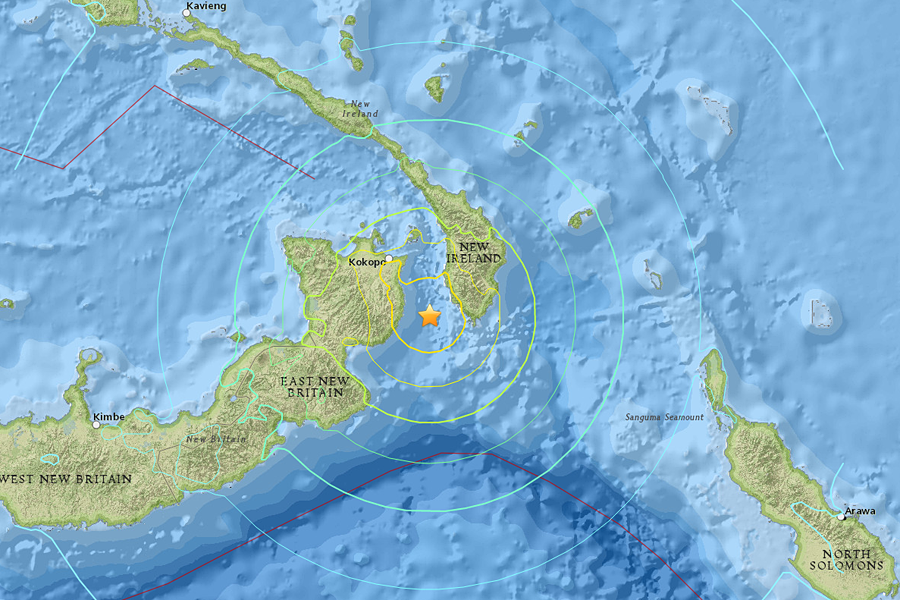Papua New Guinea earthquake causes 1-inch tsunami. No injuries reported.
Loading...
| Sydney
A powerful earthquake rattled the South Pacific nation of Papua New Guinea on Monday, generating a small tsunami and frightening locals near the epicenter, but prompting no reports of damage or injuries.
A tsunami of half a meter (1.5 feet) was measured in the harbor of Rabaul, a town near the epicenter of the magnitude-7.7 earthquake, said Martin Mose, acting director for Papua New Guinea's National Disaster Center. The quake struck at a depth of 65 kilometers (40 miles), about 50 kilometers (30 miles) southeast of the town of Kokopo, near Rabaul, in northeastern Papua New Guinea, the U.S. Geological Survey reported.
The Pacific Tsunami Warning Center had warned that tsunami waves up to 3 meters (10 feet) could strike parts of Papua New Guinea, and waves of less than 0.3 meters (1 foot) could hit other Pacific countries, as far north as Russia. The center lifted the warning a few hours later, after reporting a 3-centimeter (1-inch) tsunami wave was measured at a wharf in the Solomon Islands, about 450 kilometers (280 miles) from the epicenter.
In Rabaul, residents noticed the sea level rose slightly, prompting ocean water to flood the parking lot of a shopping center near the beach, said Mika Tuvi, an employee at the Rabaul Hotel. "But nothing beyond that — no damage caused," she said.
When the quake struck, guests and workers at the hotel fled outside, fearing the building would collapse, Tuvi said. The tremors, which lasted for about 5 minutes, were frightening in their intensity, but the hotel withstood the shaking, she said.
Officials in the capital, Port Moresby, were working to contact their counterparts in the outer provinces, but hours after the quake, there still had been no reports of damage or injuries, said Mose, of the national disaster center. He said he was confident the nation had averted a major catastrophe.
The quake caused strong shaking and knocked items off shelves in Kokopo, and was felt 800 kilometers (500 miles) away in Port Moresby, said Chris McKee, assistant director of the Geophysical Observatory in Port Moresby.
Earthquakes are common in Papua New Guinea. The country lies on the "Ring of Fire" — an arc ofearthquake and volcanic activity that stretches around the Pacific Rim.
Copyright 2015 The Associated Press. All rights reserved. This material may not be published, broadcast, rewritten or redistributed.







